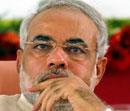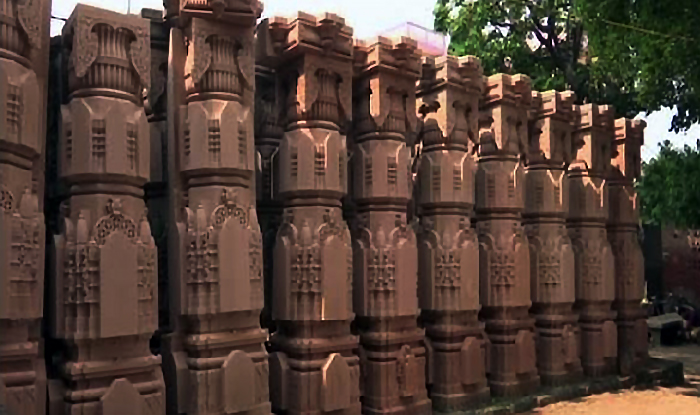The Centre on Sunday extended the COVID-19 lockdown for two more weeks till May 31 with more exemptions as the Centre allowed states more powers for profiling its zones, re-starting of inter-state and intra-state bus travel, plying of autos and taxis and opening of all shops, including in markets but barring those in malls.
Here are the answers to all your questions:
What is 'Lockdown 4.0'?
On March 24, 2020, Prime Minister Narendra Modi announced a 21-day nation-wide lockdown to prevent the spread of the coronavirus outbreak. India follows several countries in its measures to curb the pandemic, which was the first lockdown. Prime Minister then extended the coronavirus lockdown till May 3, which was dubbed as 'Lockdown 2.0'. This lockdown was further prolonged till May 17 which became 'Lockdown 3.0' and now, as the government aims at a staggered re-opening of the country while maintaining the norms such as social distancing, the fourth extension till May 31 is called 'Lockdown 4.0'.
Who issues the guidelines for the lockdown?
The Ministry of Home Affairs (MHA) issues the guidelines for the lockdown.
Are guidelines different during a lockdown compared to normal life?
Well, of course. Guidelines during a lockdown instruct people on all matters from whether you are allowed to leave your house, to whether an MNC is allowed to function and with what percentage of attendance.
Are masks compulsory even now?
Masks are made mandatory in all public places, by the Union Health Ministry. All the states and UTs are to strictly abide by this law. Not wearing masks will attract penalties which are specified by the state.
How would that be determined for an area?
By Lockdown 3.0, all areas of state districts were segregated into containment, red, orange and green zones. In the Lockdown 4.0, states will categorise the areas into red, orange and green zones.
Colourful... but what are red, orange and green zones?
According to the guidelines issued by the Ministry of Health and Family Welfare, states can categorise districts or municipal corporations as red or orange zones.
"States may, however, also choose to categorise a sub-division or ward or any other appropriate administrative unit as red/orange/green zone after detailed analysis at their end, duly taking into consideration the geographical spread of cases, contacts and their zone of influence in terms of disease spread," the ministry said.
With the commencement of the third phase of lockdown, the Union Health Ministry listed 130 districts across the country in the red zone, 284 in the orange zone and 319 in green zones based on the incidence of cases of COVID-19, doubling rate, the extent of testing and surveillance feedback.
Districts were earlier designated as hotspots/red-zones, orange zones and green zones primarily based on the cumulative cases reported and the doubling rate.
A district will be considered under green zone if there have been no confirmed cases of COVID-19 so far or there is no reported case since last 21 days in the district, according to the letter.
Now, what is a buffer zone?
A buffer zone is an area of spread in a 5-kilometre radius (7 Kms in rural areas) of a containment zone.
How do I find out the zone I am in?
You either look at your state or city's municipal corporation pages to avail the zone details. You can also look at your district magistrate's Twitter handle or Facebook account to find out the list of the zone under which your area falls.
Can I leave my home now?
That depends. If you are in a containment zone or a red zone, you may not be allowed to leave your residence. Otherwise, in the other zones, the state governments and the district magistrates will decide upon the level of movement within and outside the zones.
Can I shift from a red zone to an orange or green zone?
You cannot. The residents of a red or containment zone cannot move out of their zones, nobody may enter the zones as well.
What about my office?
The private offices can operate in non-containment zones. The guidelines for offices to work will be listed by the state governments and the DMs (district magistrates).
Will I be allowed to use my bike/car or any other personal vehicle?
There is a likely chance of you being allowed to take out your bike or car or other vehicles (not helicopters or aeroplanes), if you are not in a containment zone. You need to check the rules listed by your state government or DM. The number of people who can ride at one time will also be decided by the state.
Can my driver, house help or neighbour drive me to my office/destination? Will I be allowed to take them to my workplace?
Yes, provided they are not from a red zone which may be risky for the passenger. This facility is prohibited in a containment zone. Also, check with your workplace regarding the norms to follow within the office. For the details on travelling with others in the car, look into the info provided by your state government, DM and Resident Welfare Association (RWA).
Will be able to fill petrol or diesel for my vehicle?
Definitely, yes. All petrol pumps, LPG and oil agencies will continue to be open.
What if I need to take a cab, auto or book one via Ola/Uber?
The same rules apply to them as well. Unless you are in a containment zone, the restrictions for using cabs and autos will be eased.
What if I need to use public transport like buses?
Some states have allowed buses to run, such as in Tamil Nadu in certain areas. You will have to check with the state government or DM's regulations enlisted for knowing the routes and norms to follow inside a bus.
Can I use my city's Metro line?
Unfortunately, metro lines are not allowed to open and will remain closed until further notification from the Centre.
Can I walk around in my area?
Walking will be permitted under the guidelines issued by the state and DM. Walking in groups will be prohibited and social distancing norms are to be followed in public at all times. Movement is allowed between 7 am to 7 pm in any zone - containment, red, orange or green.
Can I take my grandparents/kids out for a walk?
People older than 65 years of age, or younger than 10, persons with co-morbidities, pregnant women are not allowed to venture out of their residences, as they are highly susceptible to the infection.
Can I go out with my friends?
A group of less than 5 people are allowed to walk together. If you are planning to use vehicles such as bikes, every induvial must have their own as more than one person on atwo-wheeler is not allowed in certain areas. Curfew timings are from 7 am to 7 pm as movent is prohibited beyond these timings. Check the regulations issued by your local DM or state government to know further details.
What if I need to see my friends, relatives or others?
The Resident Welfare Association (RWA) will make a decision about allowing visitors inside a zone, barring containment zones. Nobody is allowed within the containment zone or permitted to leave.
Can we now go to restaurants?
Restaurants are still closed irrespective of the zone. Take-away or delivery services will be available, nevertheless.
Can we go to malls?
Malls and restaurants and shops in the malls will remain closed irrespective of the zone, as these are crowd-pulling zones.
Does that mean multiplexes, theatres and drama/concert halls are closed as well?
Cinema halls, theatres, multiplexes and drama/concert halls will remain closed regardless of which zone they are in, till further instructions are sent by the Centre.
Can I go to the beach or a monument/heritage site?
Since such public places will attract a huge crowd that will be tough to control, beaches, monuments, heritage sites and such public places will be closed.
Can I go to coffee shops?
As coffee shops will fall under the category of restaurants, they will also be closed. Take-away and delivery services can be availed from the shops.
What about essentials?
Grocery shops, milk vendors, newspaper circulation are allowed to stay open. Proper sanitisation must be done from time-to-time to ensure customer and vendors’ safety.
I need to repair my phone. Will stand-alone non-essential services be open?
Such non-essential services are allowed to open in non-containment zones. Refer the state governments and DMs rules for knowing the type of shops and state and districts they are permitted in.
What about in-house repairs or services? Can I call a mechanic to my house?
Yes, provided your RWA has permitted to allow mechanics, workmen and labourers inside in non-containment zones.







Comments
Add new comment